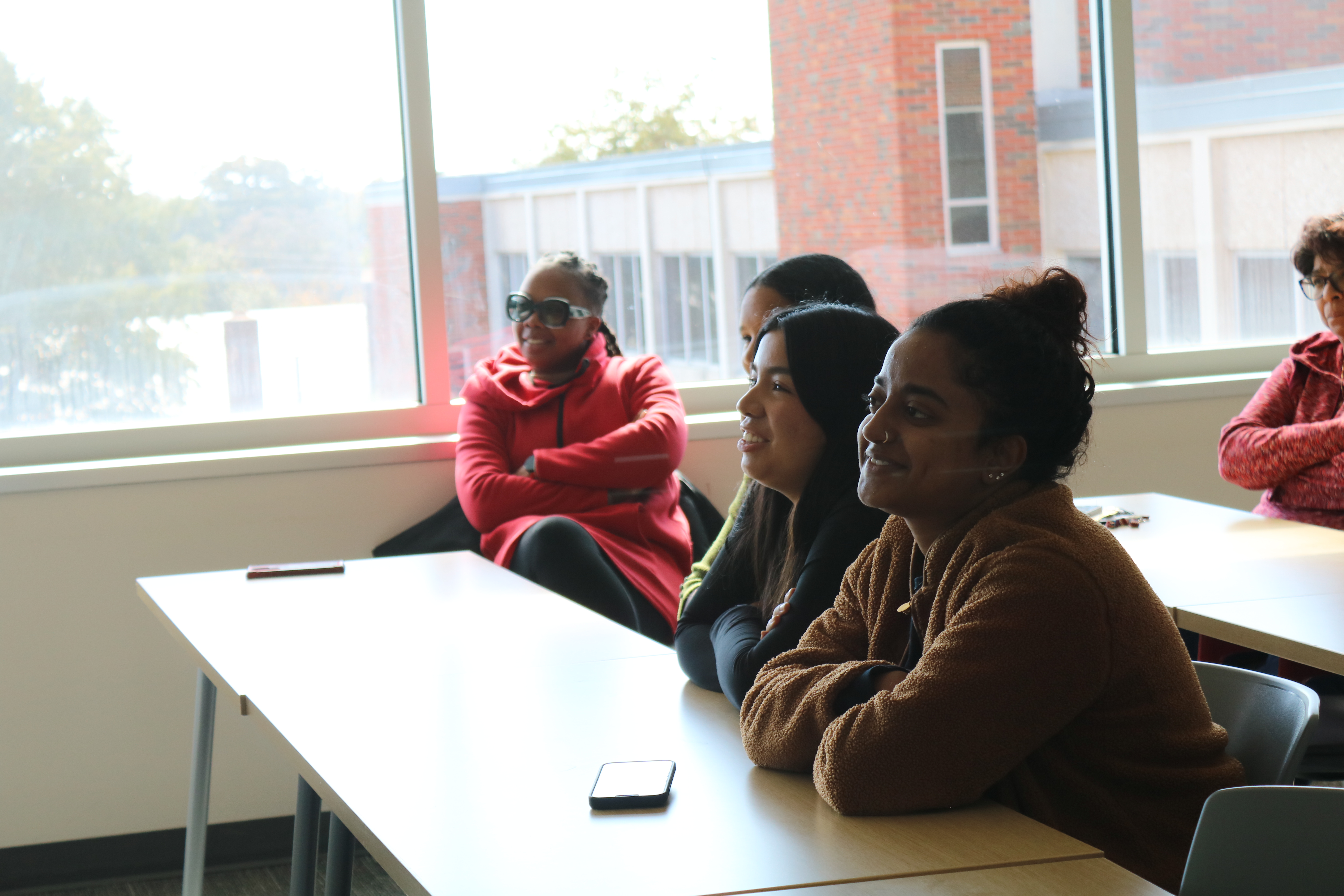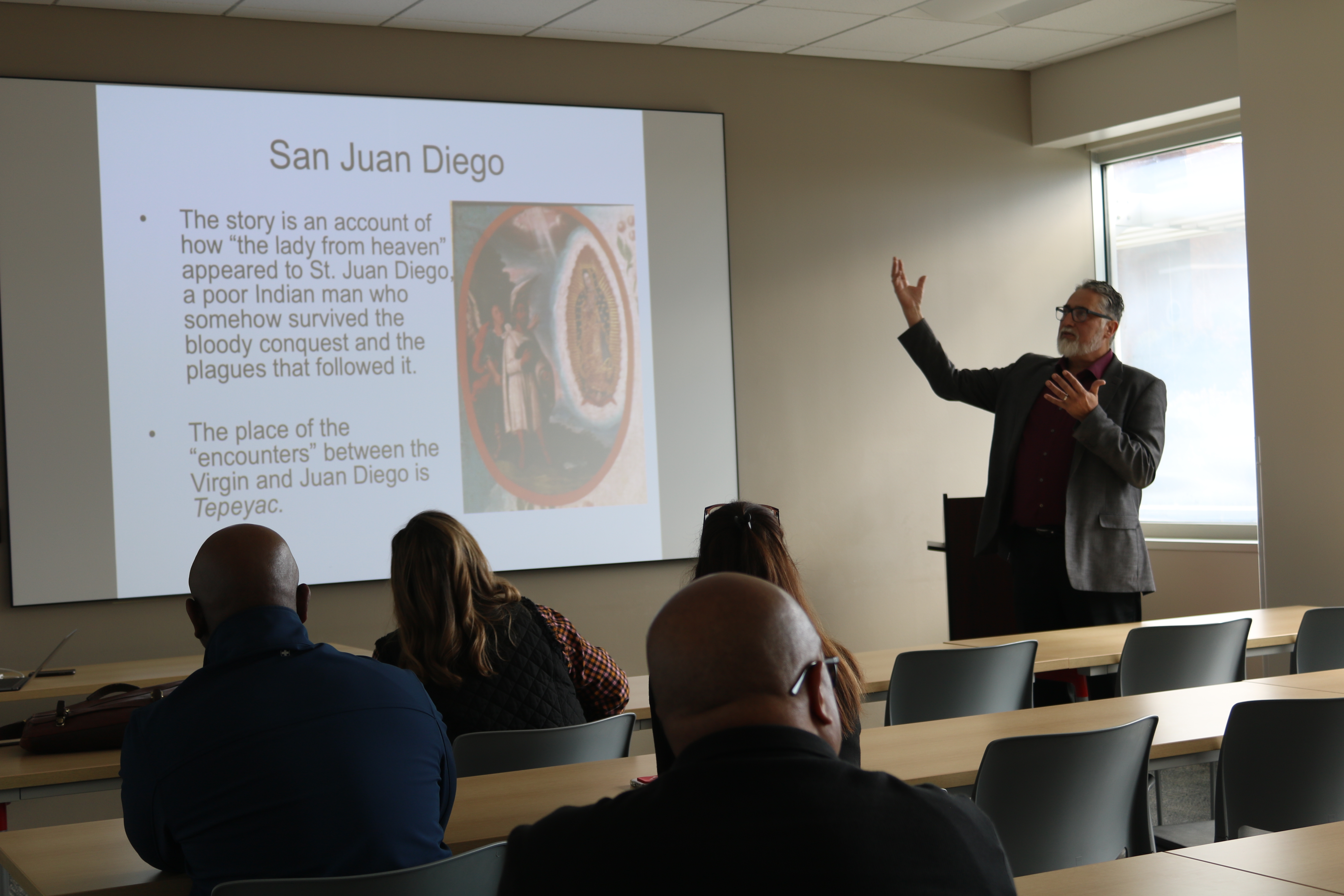Sharing the Religious, Cultural, and Historical Significance of the Story of Our Lady of Guadalupe
 December 12 marks the Feast of Our Lady of Guadalupe. With this celebration coming up soon, University Mission and Ministry hosted an educational event to share the significance of the feast day with students, faculty and staff. Lena Gokelman, director of Music Ministries and coordinator of Liturgy and Media, and Dr. Arturo Chavez, associate vice president of Diversity, Equity, and Inclusion, collaborated to host a presentation discussion about Our Lady of Guadalupe.
December 12 marks the Feast of Our Lady of Guadalupe. With this celebration coming up soon, University Mission and Ministry hosted an educational event to share the significance of the feast day with students, faculty and staff. Lena Gokelman, director of Music Ministries and coordinator of Liturgy and Media, and Dr. Arturo Chavez, associate vice president of Diversity, Equity, and Inclusion, collaborated to host a presentation discussion about Our Lady of Guadalupe.
Dr. Chavez, who teaches a religious course that discusses Our Lady of Guadalupe, told the story of this religious icon and how it is related to the holiday celebration. The feast celebrates the day that Mary, mother of Jesus. appeared to Juan Diego, an Indigenous man living in Mexico, on December 9, 1531, on Tepeyac Hill. At the time, the Mexican region was being colonized by settlers, and racism ran rapid through the region.
Upon their first encounter, Mary spoke to him in his native language and asked him to go to the bishop to request that a shrine be built to her on the hill. Juan Diego new that his identity as an Indigenous man would warrant prejudice from the Bishop, who was favored due to his paler complexion. He tried to reason with the bishop but was turned away and was instructed to bring proof of his encounter.
On December 12, Juan Diego went back to Mary for help. Mary placed flowers in Juan Diego’s cloak and asked him to take them to the bishop. Returning to the bishop, he opened his cloak to give the flowers to him, as well as revealing an imagine of Mary imprinted on his cloak.
Having received his proof, the bishop instructed for the shrine to be built on Tepeyac Hill.

Gokelman feels it’s important for UIW as a Catholic Hispanic Serving Institution to recognize Our Lady of Guadalupe and her significance to many on and off campus. She noted that whether someone is a believer or not, many people find her to be sacred. Some choose to honor her through expressions such as prayer, art, song, activism, and murals.
“The more we understand about one another, the more we strengthen our relationships and open the door for more meaningful and respectful interactions. We can only serve our community well when we truly know them,” Gokelman shared.
Dr. Chavez felt that in addition to recognizing her religious significance, it is just as important to acknowledge her story’s historical significance.
“Sharing the painful, historical context of the story of Our Lady of Guadalupe at a time of great suffering resulting from the conquest and subsequent, racist colonization of Latin America is important. Without this context, the story is told like a pious fairytale with very little to say to us in our times, as we continue to struggle for racial justice. Our Lady of Guadalupe is a powerful symbol of God’s love for people of all races and diverse backgrounds and her story is not a fairy tale; it is a call to restorative justice, personal transformation, and systemic change,” explained Dr. Chavez.

